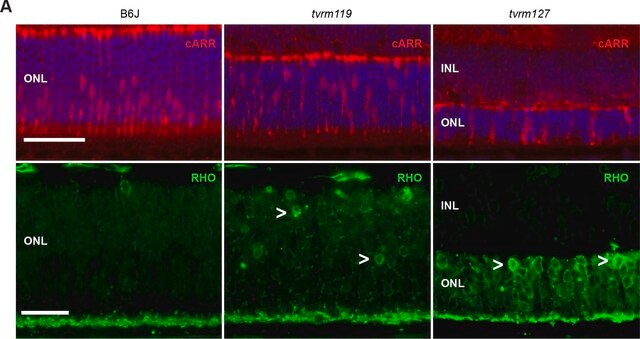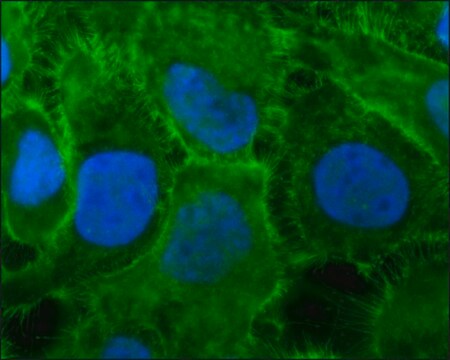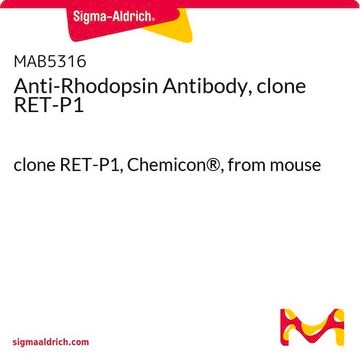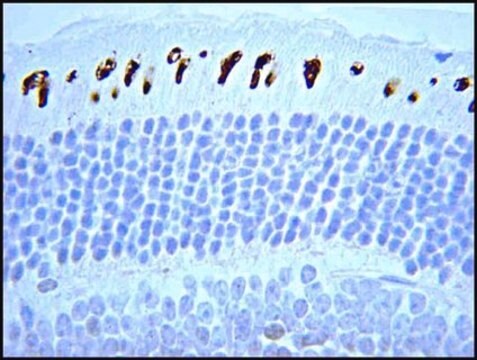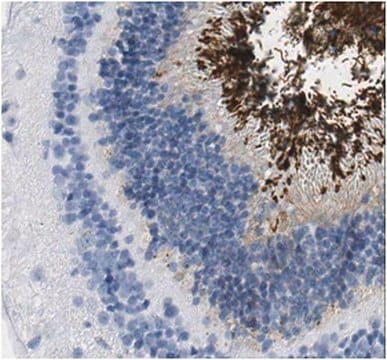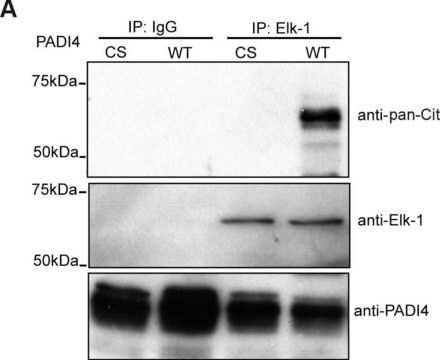O4886
Monoclonal Anti-Opsin antibody produced in mouse
clone RET-P1, ascites fluid
Synonym(s):
Anti-Opsin Antibody, Mouse Anti-Opsin, Opsin Detection Antibody
About This Item
Recommended Products
biological source
mouse
Quality Level
conjugate
unconjugated
antibody form
ascites fluid
antibody product type
primary antibodies
clone
RET-P1, monoclonal
mol wt
antigen 39 kDa by immunoblotting (IB of rat retina produces closely spaced doublet)
contains
15 mM sodium azide
species reactivity
goldfish, mouse, tiger salamander, rat, amphibian, quail, dove, duck, rabbit, bovine, human, turtle
technique(s)
electron microscopy: suitable
immunocytochemistry: suitable using cultured cells
immunohistochemistry (frozen sections): 1:10,000 using frozen sections of rat eye
indirect ELISA: suitable
radioimmunoassay: suitable
western blot: suitable
isotype
IgG1
UniProt accession no.
shipped in
dry ice
storage temp.
−20°C
target post-translational modification
unmodified
Gene Information
human ... RHO(6010)
mouse ... Rho(212541)
rat ... Rho(24717)
Related Categories
General description
Immunogen
Application
Biochem/physiol Actions
Disclaimer
Not finding the right product?
Try our Product Selector Tool.
Storage Class Code
10 - Combustible liquids
WGK
WGK 1
Flash Point(F)
Not applicable
Flash Point(C)
Not applicable
Personal Protective Equipment
Certificates of Analysis (COA)
Search for Certificates of Analysis (COA) by entering the products Lot/Batch Number. Lot and Batch Numbers can be found on a product’s label following the words ‘Lot’ or ‘Batch’.
Already Own This Product?
Find documentation for the products that you have recently purchased in the Document Library.
Customers Also Viewed
Our team of scientists has experience in all areas of research including Life Science, Material Science, Chemical Synthesis, Chromatography, Analytical and many others.
Contact Technical Service